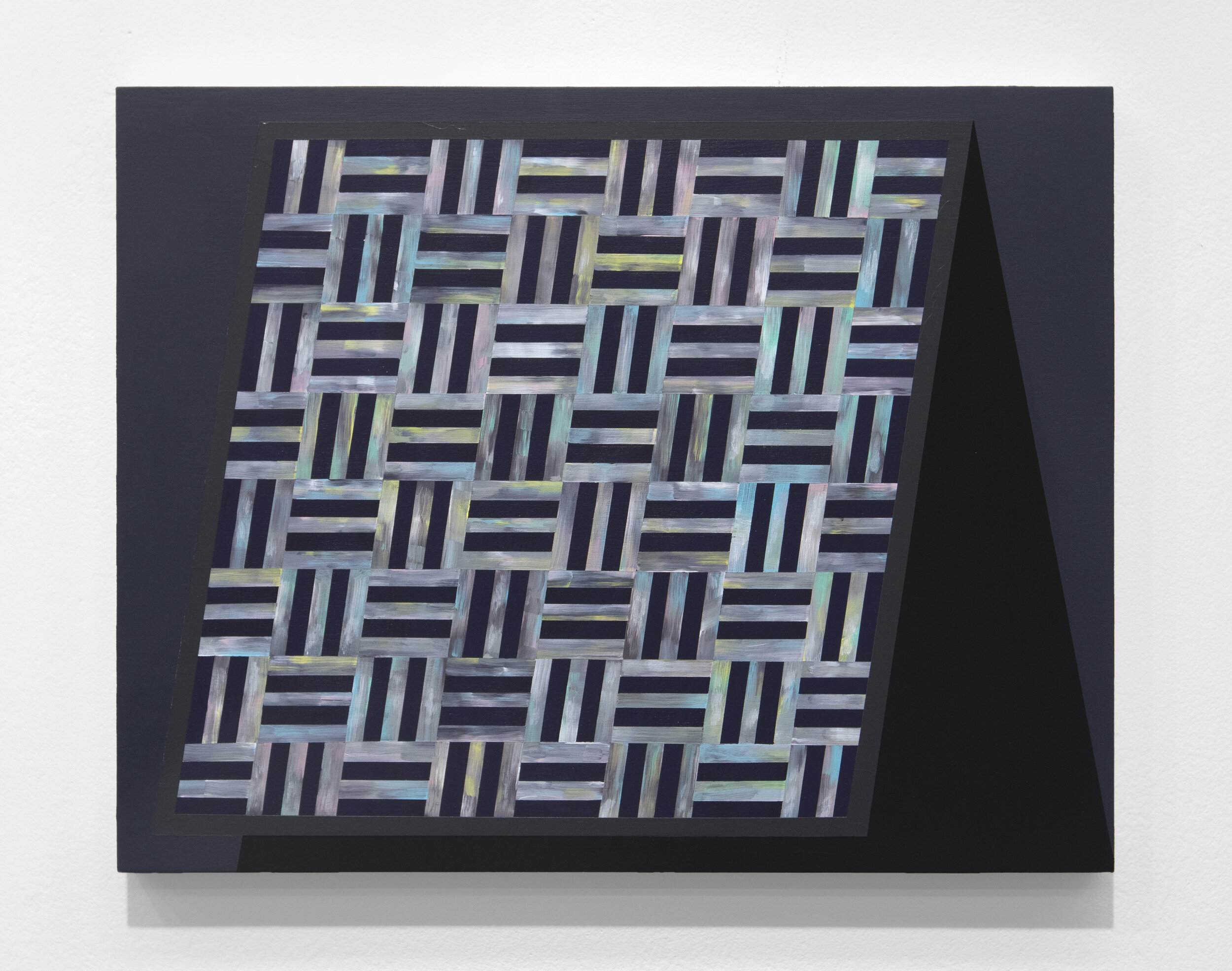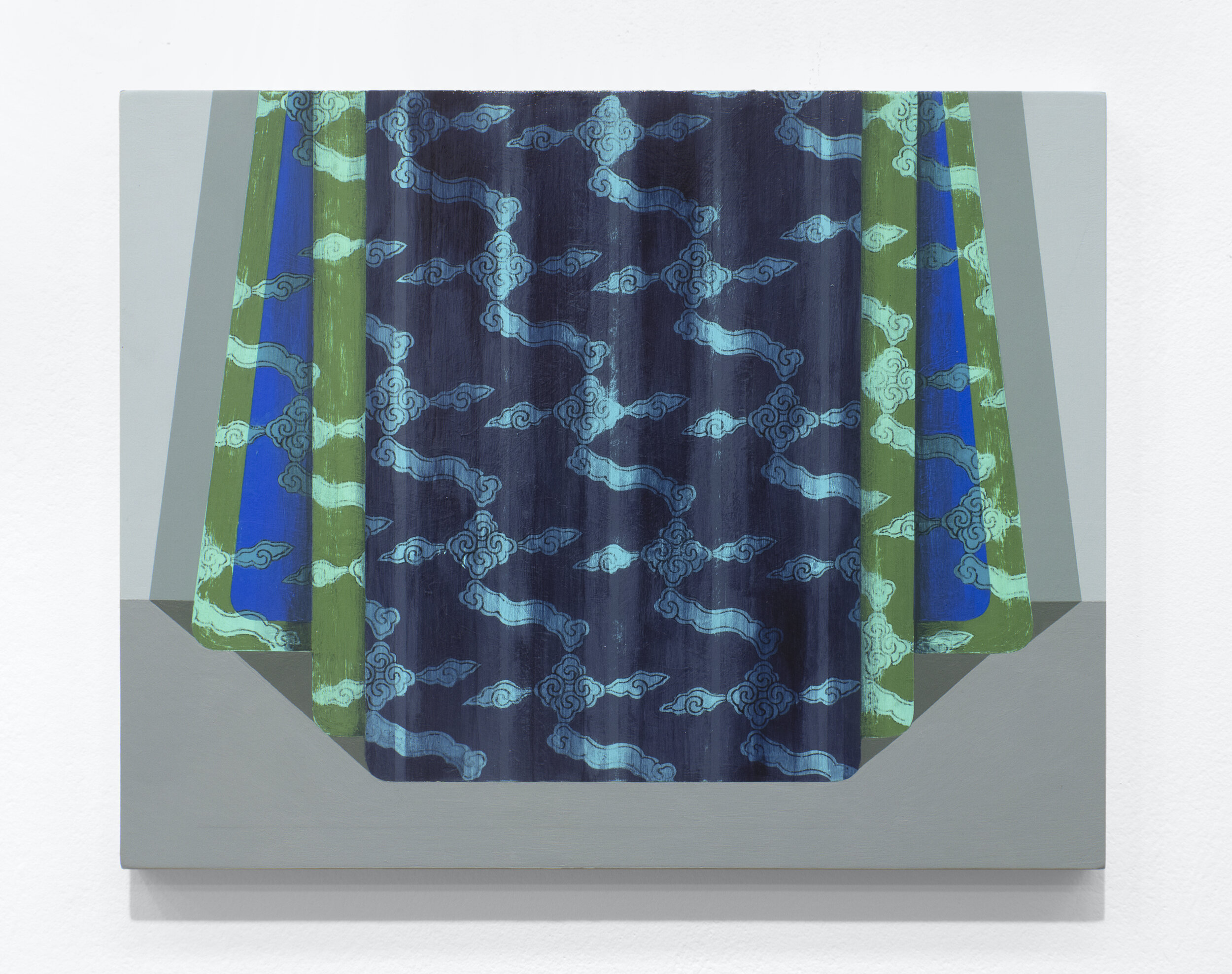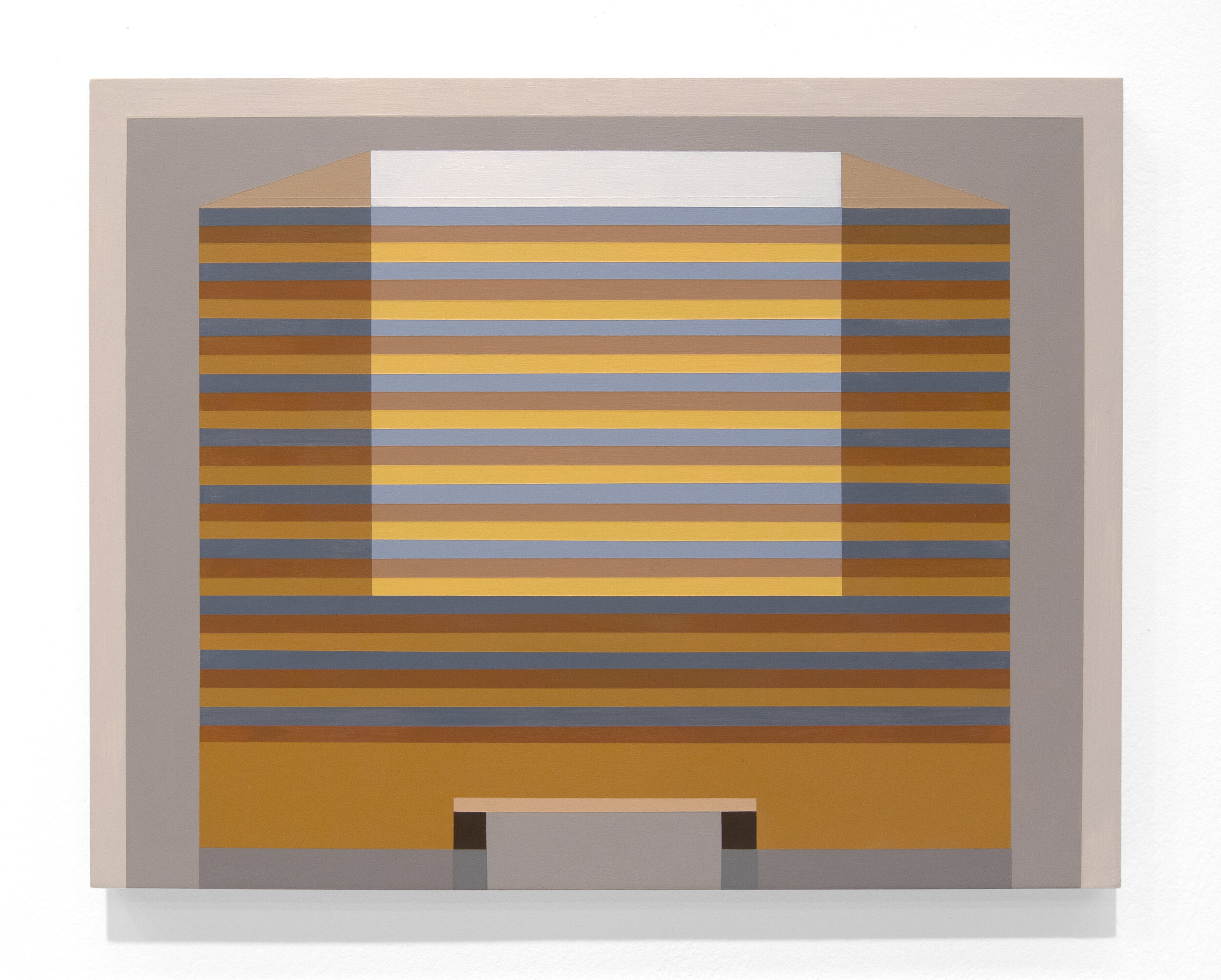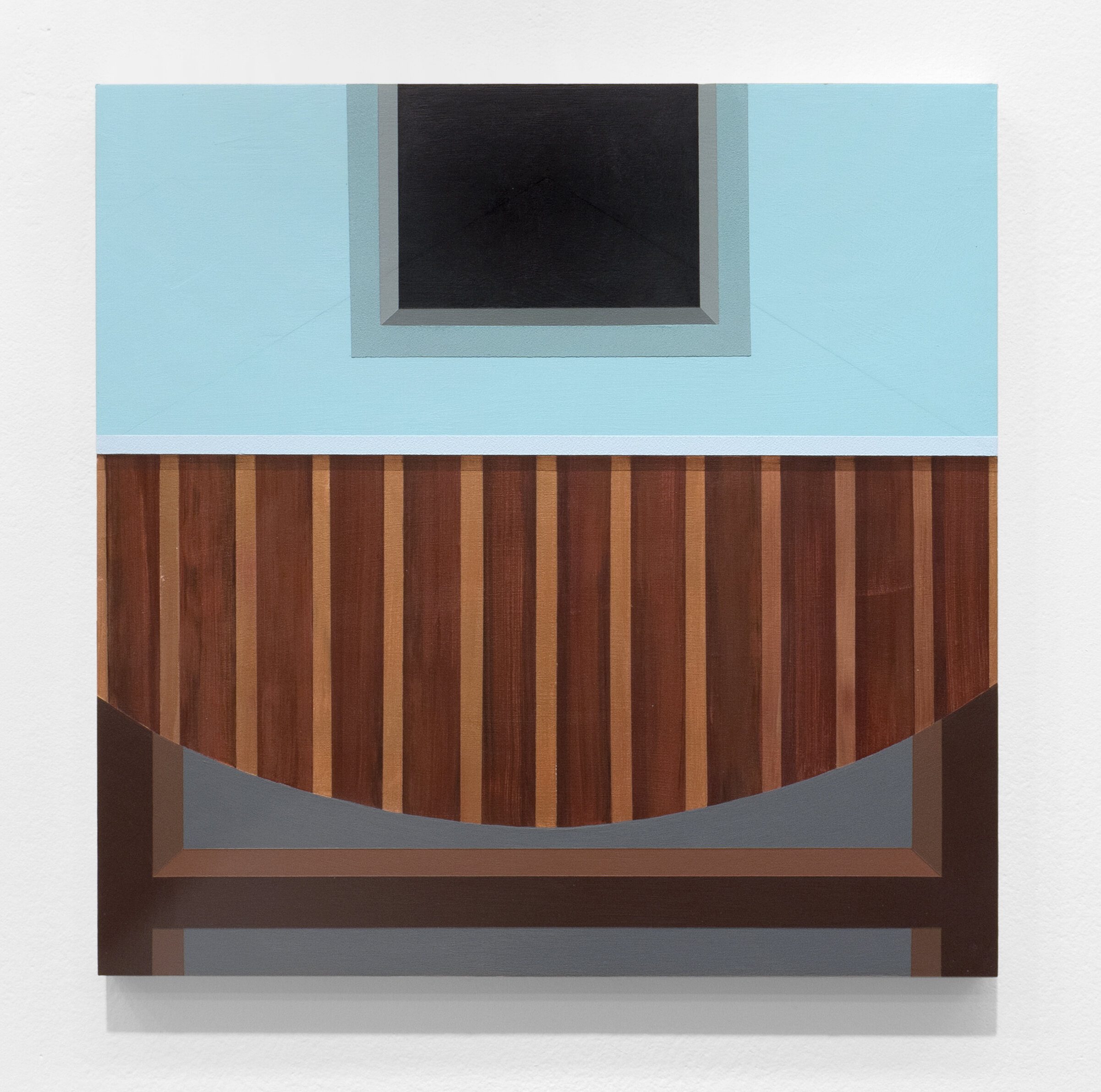Mary Laube in her Knoxville studio
Mary Laube
My paintings address the relationship between material culture and memory. Tables, boxes, braids of hair, and textiles are treated as portraits—vessels for the inscription of memory or surrogates for absent bodies. While physically inert, they possess an animated quality: performing as stand-ins for something once living. Overtime, the recognizable forms in my paintings become abstracted, representing the spaces in our memory where we imagine or invent something new. My recent work uses Korean imagery to represent memory within the context of personal and political narratives. Prompted by my own identity as a Korean-born American, I create fragmented representations related to cultural displacement, memory loss, diasphoric identity, and the ubiquitous absence of ancestral knowledge. Inspired by Homi Bhabha’s concept of the third space, and the hybrid nature of identity, I explore cultural memory loss through the representation and abstraction of Korean artifacts. I approach memory as an experience that is continually mediated by culture. The objects represented in my paintings come from both individual and collective expressions of memorialization including museum collections, photographic archives, and landmarks related to historic preservation.The museum, while an authority on representing collective memory, has ideological commitments, vulnerable to abstractions. Similarly, our ability to recollect the past is elusive, and transforms over time as we collect new experiences. Within my paintings, the flattened, paper-thin fragments of my observations represent memory loss not only as the distancing from an absent object, but also as an imaginative or even ideological force that can forge new content.
Interview with Mary Laube
Questions by Andreana Donahue
Can you tell us a bit about your background and where you grew up? In what ways have your early visual experiences and personal history led to art-making?
I was born in Seoul, and came to the U.S. when I was quite young – not quite two years old. I grew up in the Chicago suburbs. My parents were both creative, and I deeply admired them for this.
Where are you currently based and what initially attracted you to working in this community? Are there any aspects of this place that have surfaced in your work?
I came to Knoxville three years ago to teach at the University of Tennessee. I love the people I work with. The community is really supportive and energetic. I like the mild winters and living near the mountains. I feel a lot of gratitude for this place.
Can you tell us about your studio and what a typical day is like for you? Do you share space or ideas with other artists while working, or is it a more solitary routine?
My studio habits have changed dramatically since the concurrent arrival of Covid and my second child. I am currently working out of a home studio: a small section of my living room. I work in sprints throughout the day and during the evening hours when everyone is asleep. I sometimes invite my 4-year-old in for studio visits. He has a small desk for coloring; he uses the bottom third of my wall for hanging drawings. Typically, I do enjoy and enforce a more distinct boundary between studio and children. I have a studio on campus alongside my colleagues that I hope to return to when I am able to do so. I also have dreams of building a separate space in my back yard that will provide solitude, while remaining accessible to the various needs of my little ones.
Goddess of Birth, 2019. Acrylic on panel, 12 × 12 inches.
What criteria do you follow for selecting materials? Do you prefer to maintain a narrow focus or work across diverse media? How do you navigate the limitations and possibilities that result from this path?
I primarily work with acrylic on panel. Within this I enjoy stretching the boundaries of my own comfort and knowledge of acrylic’s abundant mediums and processes. Diverse source imagery pushes me to solve various material problems: how can the application of material meet the image in an interesting way? This process leads me to explore the depth of a seemingly narrow focus. When I work on paper, my material choices are much more diverse, including colored pencils, graphite, water color, and gouache.
Can you walk us through your overall process? How would you describe your approach to manipulating materials? What about decision-making and editing?
My paintings are made using brushes, knives, stencils, tape, and acrylic media. Despite the appearance of my work being “planned” or calculated prior, there is a significant amount of surprise and improvisation involved throughout my process. I like acrylic because of its potential to be shaped and sanded in a sculptural way. Most paintings have several layers underneath that are completely invisible to the viewer, but were instrumental to arriving at the end result. I begin each work by observing a single object, mining for visual information and laying groundwork for subsequent decisions that are more intuitive or knee-jerk. In terms of decision-making and editing, I often generate ideas using collage-processes, cutting and pasting (digitally and by hand) to fragment and re-contextualize forms.
Can you talk about some of the ongoing interests, imagery, and concepts that have informed your process and body of work over time? How do you anticipate your work progressing in the future?
My recent paintings are centered around the notion that diaspora and displacement create identities that cannot be essentialized or totalized. I represent this in my work by producing synthesized forms, “by-products” if you will, that are born from re-imagining historical artifacts. My work posits the emergence of identity as an ever-transforming process. Objects such as wrapping cloths, ink stones, Buddhist statues, and shaman symbology are processed through painting. They emerge as imaginative forms that re-shape seemingly mummified fragments of history, into unstable and mutable ideas.
Palanquin, 2019. Acrylic on panel, 12 × 12 inches.
Do you pursue any collaborations, projects, or careers in addition to your studio practice? If so, are there connections between the two?
Since 2013 I have been involved in a collaborative duo with composer Paul Schuette, called the Warp Whistle Project. Our work collages hand-made materials with integrated technologies for the production of sound, motion, and light. While this is still part of my studio practice it is very different, and involves entirely different processes of making.
As a result of the pandemic, many artists have experienced limited access to their studios or loss of exhibitions, income, or other opportunities. Has your way of working (or not working) shifted significantly during this time? Are there unexpected insights or particular challenges you’ve experienced?
I’ve been drawing almost exclusively because I found it impossible to continue painting in my home studio. At first, I was really disappointed to not be painting, but this shift has actually been really good for me. The drawings are opening new doors, and allowing me to explore ideas with less inhibitions.
In a time that seems to be marked by uncertainty, collective anxiety, and increasing social unrest, why do you think the perspectives and contributions of artists remain meaningful? Do you feel a natural relationship exists between your work (or the role artists play more broadly) and confronting established systems - of power, cultural institutions, or otherwise?
Artists are intensely meaningful because the work they do requires a kind of thinking and acting that is open and critical. To work creatively is to consider a multitude of choices and ways of being. Yet, we mustn’t overlook the reality that artists exist within established systems that operate on power dynamics– artists are not immune to forces that privilege some while excluding others. With that said, I think certain conditions of art, provides potential to transgress and destabilize these institutions from all sides.
Headrest, 2019. Acrylic on panel, 12” x 14”.
Can you share some of your recent influences? Are there specific works - from visual art, literature, film, or music - that are important to you?
I’ve been reading a lot of fiction. I am excited by writers who address transcultural identity and experience such as Zadie Smith, Chimamanda Ngozi Adiche, Celest Ng, and Isabel Allende to name a few. My current project is strongly influenced by post-colonial theorist Homi Bhabha’s concept of the third space, and I am deeply indebted to the work of bell hooks, particularly in regard to teaching. Formally, and pictorially my paintings are influenced by the Chicago Imagists such as Christina Ramberg, Roger Brown, and Ray Yoshida. I am also to this day deeply affected by the work of my graduate school mentors, particularly in the work of John Dilg. Music? I am currently unable to stop listening to Waxahatchee’s new album Saint Cloud, which for me, is a slow burn. I didn’t realize it would have such an effect on me when I first listened; it gets better every time I put it on. I would love for my work to stir up similar feelings.
Who are some contemporary artists you’re excited about? What are the best exhibitions you’ve seen in recent memory?
Similar to the novels I am reading, I am looking at artists making work about complex identities beyond oversimplified categorizations of race and culture: Kate Hers Rhee, Xaviera Simmons, Simone Leigh, and Jiha Moon for example. While not all that recent, a couple of years ago I saw Toyin Ojih Odutola’s When Legends Die at Jack Shainman Gallery. This exhibition blew me out of the water, and inspired me to reignite my relationship to drawing, which lived in the margins of my practice for many years.
What are you working on in the studio right now? What’s coming up next for you?
I am making small drawings on paper with graphite and colored pencil. These have been really fun to make. They are getting me through my pandemic-parent life that grants me only short bursts of time in the studio. While I hope to return to painting soon, my hunger right now, is for drawing.







